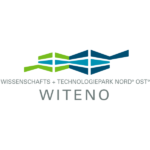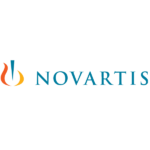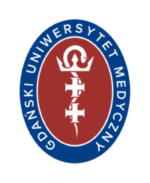INNODATASHARE – Sharing existing health data infrastructures to facilitate innovative health-related product development in the Baltic Sea region (BSR)
By integrating the available internationally competitive research and healthcare infrastructures in the BSR, we can fill the gap between knowledge and practical use, and thereby translate research to applications and clinical practice in a shorter time.

![]()
By Krista Kruuv-Käo (Competence Center on Health Technologies), Margit Ilves (BioMed SA), Lars Lindsköld (Västra Götaland Region), Andres Metspalu (The Estonian Genome Center), Henrik Mindedal (MedTech West), Jaanus Pikani (Tartu Biotechnology Park), Carsten Oliver Schmidt (University of Greifswald), Peter Frank (ScanBalt).
Valuable data in silos
The BSR health systems are stressed due to demographic changes, pressure on cost effectiveness, patient empowerment and mobility, and therefore new technologies need to be developed and introduced to the market. While the healthcare sector is regarded as a major cornerstone for the growth of the BSR, the inefficient use of existing health-research infrastructures counteracts the commercialisation of innovation by companies, notably SMEs, and thus does not take full use of the power of personalized medicine.
This can be illustrated by the abundance of medical and genome data collected and stored in different healthcare and research institutions or standalone biobanks across the BSR. Even if these infrastructures are, in theory, readily available, an efficient cross-national access for companies for research and development collaborations is still in its early phase, despite the existing demand by industry. As a result, to exploit different non interoperable infrastructures and databases simultaneously, several formal procedures (incl. organizational, legal, bioethical etc.) need to be repeated with each collection. This poses a problem for many companies, especially SMEs with a limited capacity to develop new data-related products and services and to test them in a real clinical environment. The limited capacity of SMEs stems mainly from expensive data collection and/or data integrations, complicated regulations and legal procedures.
The situation is further complicated by the limited awareness of companies regarding available infrastructures and clinical competencies that could be used for cooperative validation and implementation of new technologies in the field of medical imaging and OMICS, as well as by the lack of harmonized quality measures and IT standards. Data are collected using different local standards, bad implementation of semantics in established healthcare standards, which restricts their cross-border integration and optimal utilization. This limited interoperability reduces the discovery, replication and generalization of study findings, thus hampering the potential benefits for the patient, as well as the efficient market uptake of innovative technologies developed by companies, particularly SMEs.
Globally competitive infrastructure right here in the BSR
The above-described situation is unfortunate, as the BSR comprises world-class research infrastructures with complimentary competencies, such as the Information Infrastructure in Region Västra Götalands, Sweden, that contains more than 9.5 million radiology studies with reports collected since 2006. In addition, the population-based Estonian Biobank is linked with the national registries and hospital databases, and contains the genotype and phenotype data from 5% of the Estonian adult population. Securely linked databases with up-to-date phenotypic information give an excellent basis for developing personalized medicine. Actually, this opportunity to Estonia was recently highlighted in the Nature journal featuring Estonia as a pioneering country for genomic-based personalized medicine. Furthermore, the German Study of Health in Pomerania comprises the longitudinally most extensively phenotyped general adult population worldwide, thus uniquely bridging the worlds of OMICS and imaging.
INNODATASHARE to tackle gaps and barriers for applying innovations
Many issues in personalized medicine may only be overcome in a multi-national effort, an approach that is beyond reach for single SMEs. This will only be possible in the framework of the INNODATASHARE project based on the integration of available internationally competitive infrastructures, thereby providing a worthy reply to comparative initiatives in other countries, such as the recently announced US “New Precision Medicine Plan” with a budget of 215M $ only for the first year.
Existing infrastructures in the BSR may serve as a unique backbone for companies to achieve a faster market uptake of new technologies and services at lower costs, while complying with high-quality standards. INNODATASHARE consequently focuses on providing a platform to provide organizational, legal and quality assurance recommendations and access to health research infrastructures (i.e imaging, omics and other data from healthcare and biobanks, biomaterials and others) across the BSR to empower SMEs in the development, validation and implementation of new technologies. Building on experience gained from completed EU projects, such as epSOS and OPENGENE, and enriching them with complimentary and unique infrastructural abilities from partnering organizations, theINNODATASHARE platform gives to companies the benefit of using a standardized and secure cross-border value-added chain evaluated in selected pilot actions as part of the project to improve the development, validation and implementation of beneficial technologies for patients, health care providers and the general population.
The article is produced as follow-up to an EU pre-seed project PATHOS which prepared the HealthShare project now being proposed to potential sources of funding. HealthShare is part of the EU Baltic Sea region’s flagship HealthRegion (Priority area 7 “Innovation” in the strategy).











